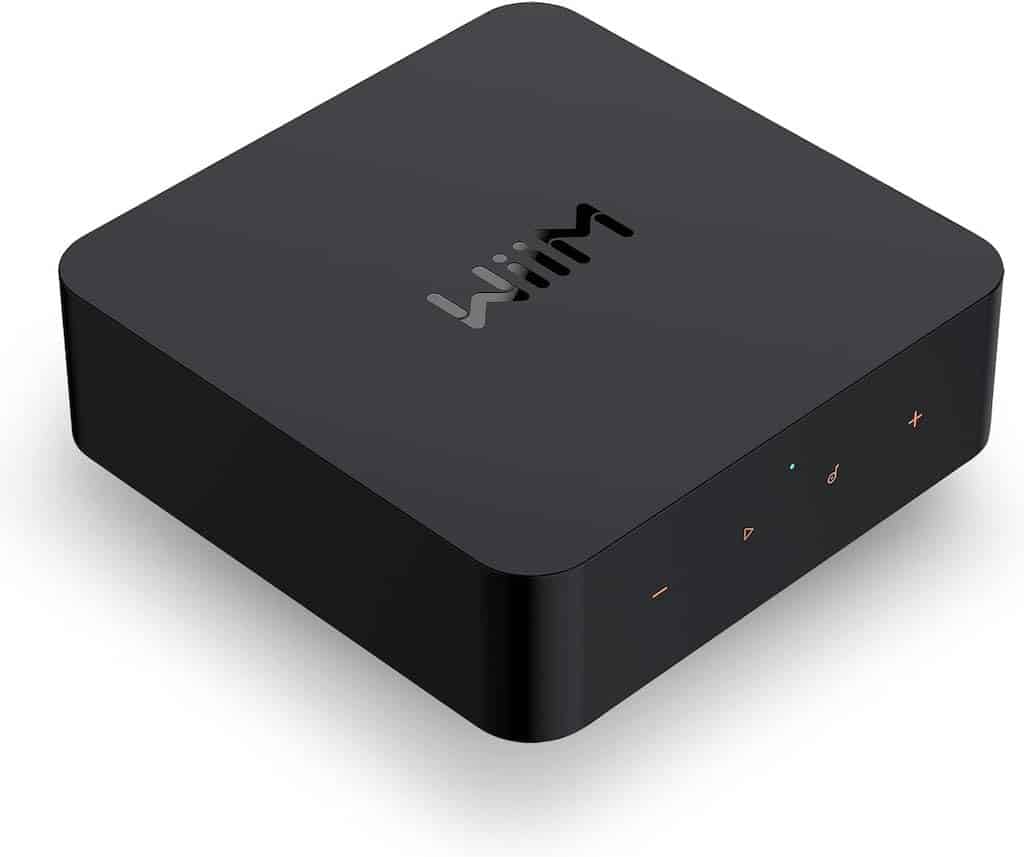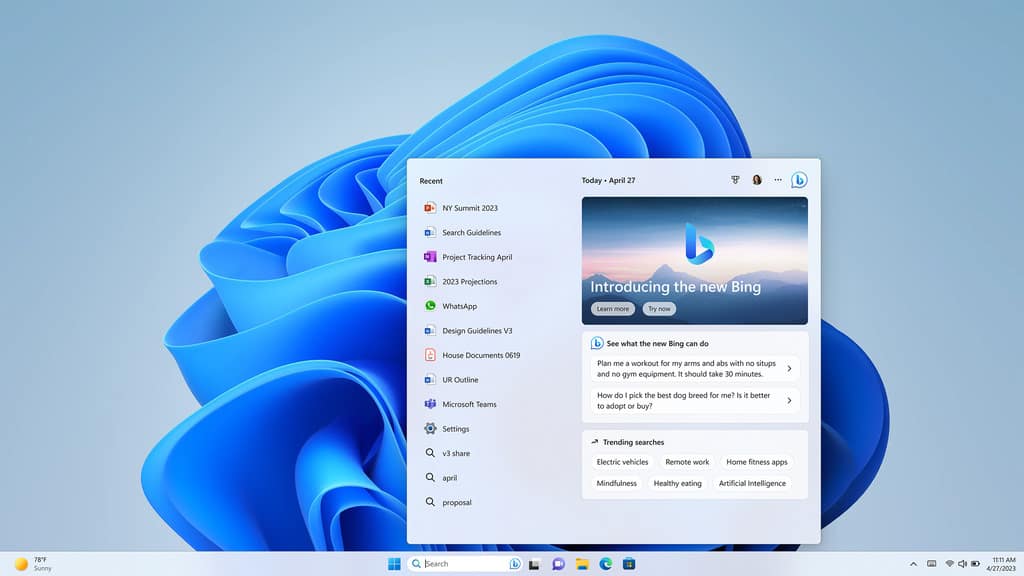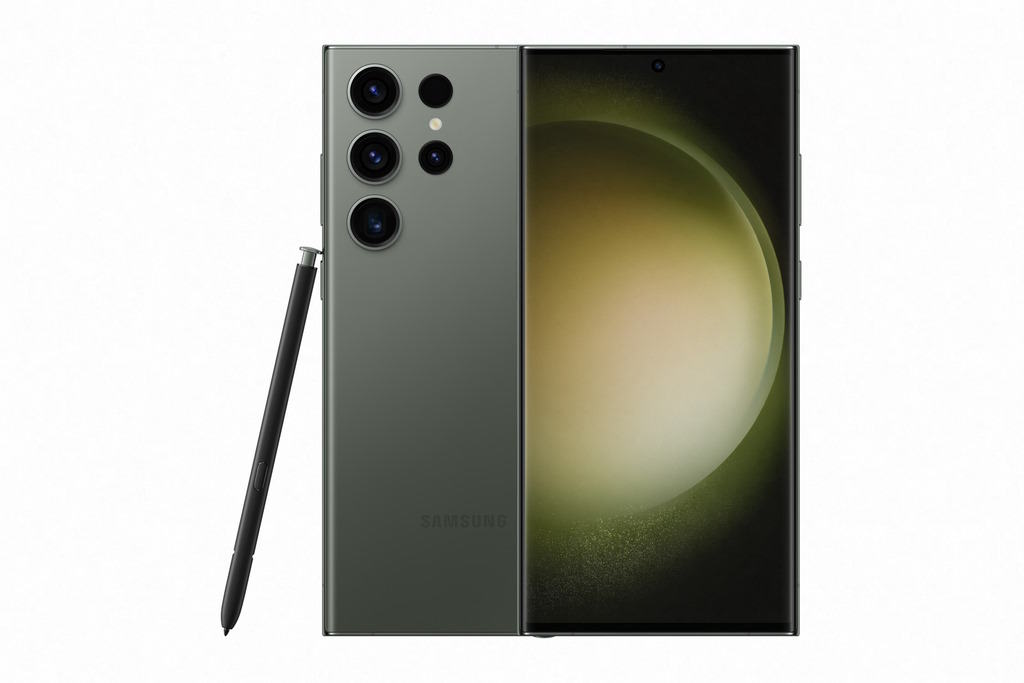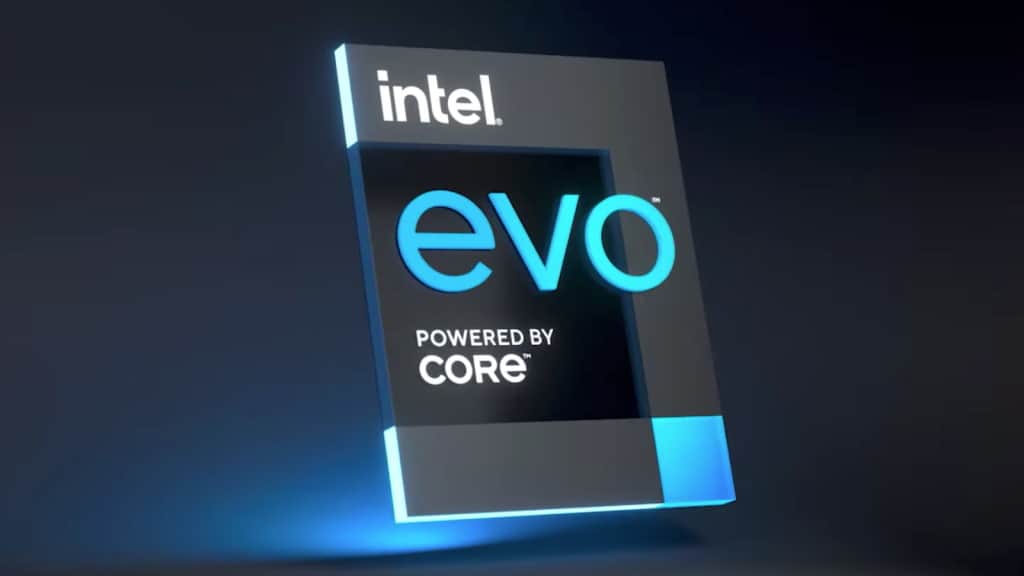D-Link DIR-X5460 Wi-Fi 6 Mesh Router REVIEW
Summary
D-Link DIR-X5460 Wi-Fi 6 Mesh Router REVIEW
The modern home has a load of Wi-Fi gear to channel and it takes a special router to do it properly. PAT PILCHER reviews D-Link’s wee marvel.
$529.99
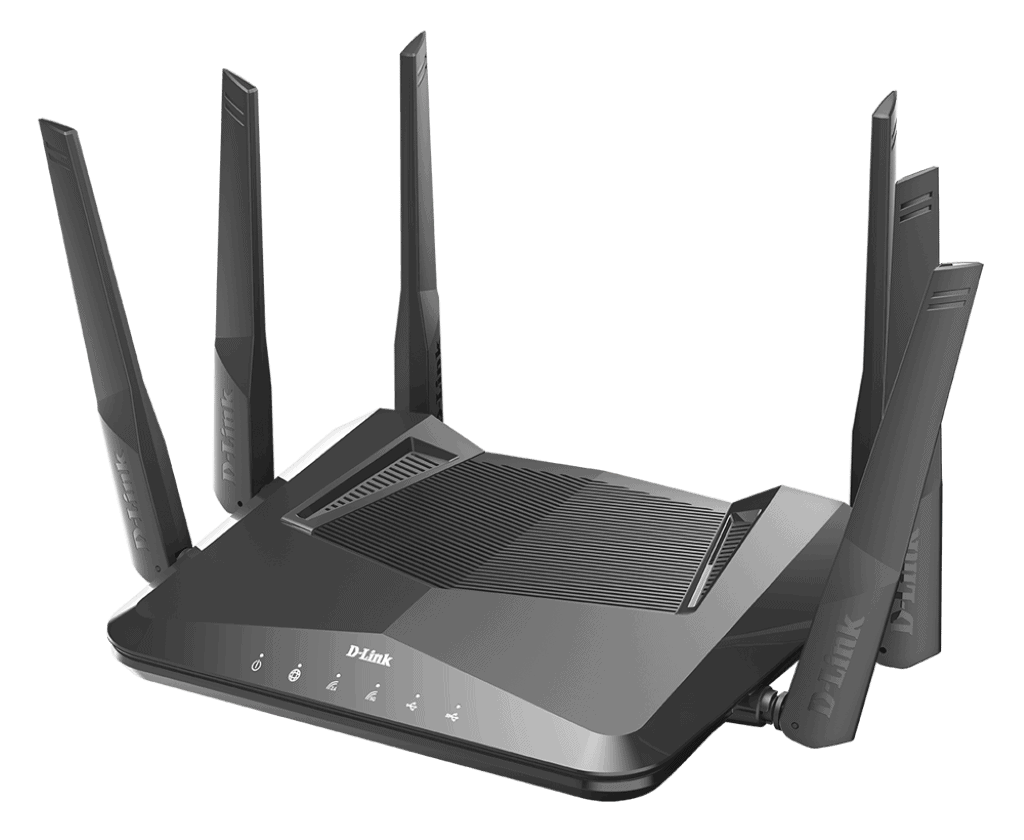
 A simple yet seldom discussed truth is this: As we kit out our homes with smart gear (lights, sound systems, surveillance, security and so on), the need for reliable and speedy home networks grows. Put simply, if your router goes tits-up, so does a lot of the stuff that you take for granted in your home.
A simple yet seldom discussed truth is this: As we kit out our homes with smart gear (lights, sound systems, surveillance, security and so on), the need for reliable and speedy home networks grows. Put simply, if your router goes tits-up, so does a lot of the stuff that you take for granted in your home.
With over 96 widgets connected to my home network, any router I use must be able to deliver the goods. Not only do I need it to offer up decent throughput and low latency, but I also want reliability. My home network needs to work, or my home doesn’t.
Further complicating things is Wi-Fi. My relationship with it is mixed. Mostly, Wi-Fi feels like the stuff of miracles. I can magically go online, and issue voice commands to turn on lights, play music, or see what is happening around my property. No wires needed.
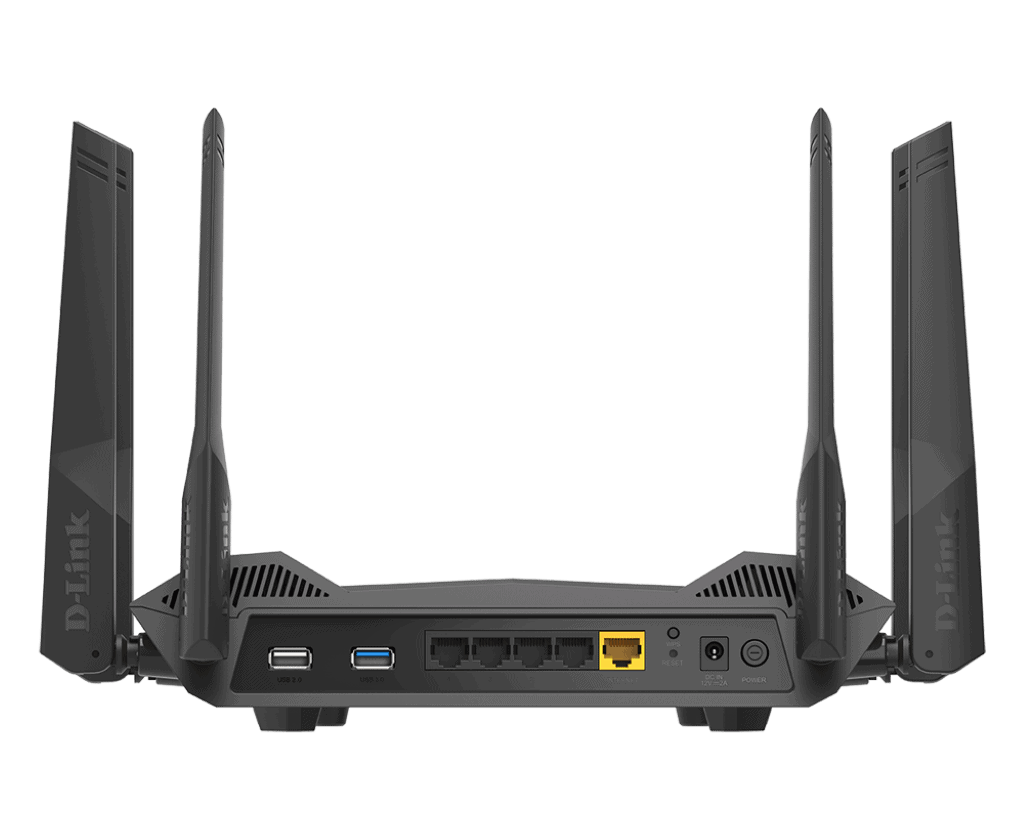
But (there’s always a but isn’t there), I have a block of flats next door, and each flat uses Wi-Fi. This means that every channel in the 2.4Ghz band is used, as are most in the 5Ghz band. At the end of the house furthest away from my router, Wi-Fi is a gamble. Some days it works brilliantly, but on others, it obstinately refuses to play ball, which isn’t ideal when large swathes of home appliances rely on it.
This time around, I have found a fix. Best of all, it proved to be a doddle to install. It comes in the form of D-Link’s EXO AX5400 Mesh Wi-Fi 6 Router (also known as the DIR-X5460). D-Link’s marketing bumf talks up its super-fast data speeds and all manner of performance and reliability benefits that come thanks to the latest version of Wi-Fi (known as Wi-Fi 6).
D-Link says that Wi-Fi 6 is up to 90 percent faster on the 2.4GHz band and a whopping 176 percent faster with 5GHz. With loads of Wi-Fi connected widgets in and around my home, Wi-Fi 6 offers a 400 percent increase in capacity. This means I can see who is at the front door without causing the 4K streamed TV show my long-suffering wife is watching to fall over.
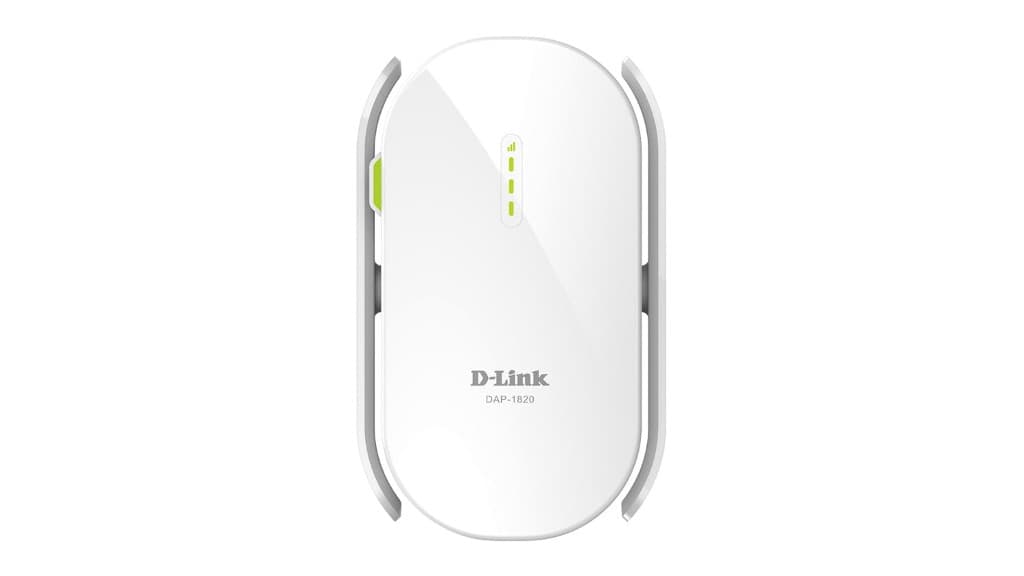
The other bonus that comes with Wi-Fi 6 is BSS colouring. You might wonder just what crayons and colouring books have to do with home wireless networking. Still, according to D-Link, “BSS colouring reduces interference in ‘noisy’ Wi-Fi environments, making more efficient use of available Wi-Fi spectrum”. I don’t know how it works, but anything that helps reduce interference from the neighbouring flats’ Wi-Fi is a huge bonus. There’s no debate that Wi-Fi 6 is a most excellent addition, but the reality is that I have few gadgets that support it.
While that’ll change over time, right now, the killer feature out of the box for my particular situation is the DIR-X5460’s mesh capabilities. These allow me to share my network connection among wireless mesh nodes, which are pretty much like mini routers. These “talk” to each other and share the network connection. By strategically placing D-Link DAP1820 mesh extenders around my house, challenging Wi-Fi reception issues have been banished. Wi-Fi coverage is pretty much at 100 percent regardless of which room I’m in.
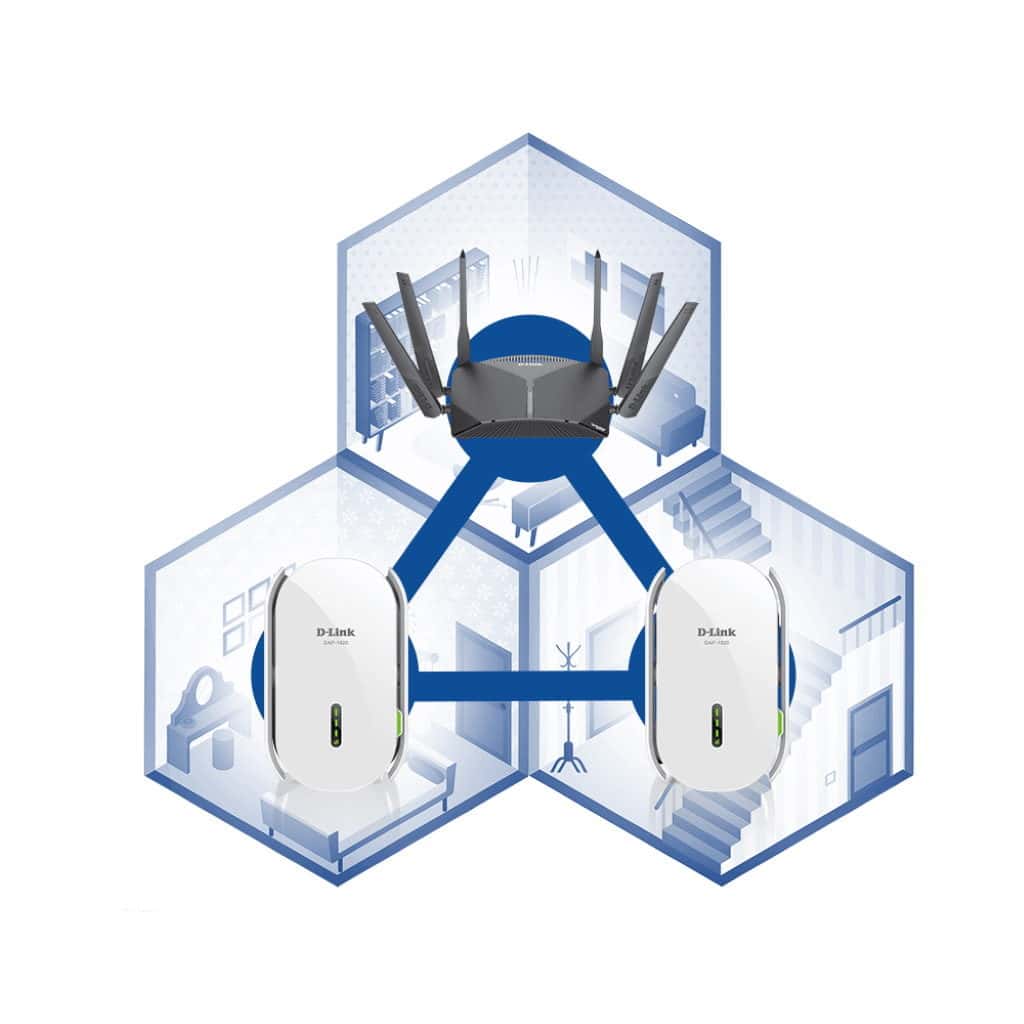
Unlike old school range extenders, the mesh network I’ve set up operates a single network name. In non-geek speak this means I can enjoy seamless connectivity throughout my entire home without having to fart about with different Wi-Fi networks.
Mesh networks mightn’t be anything new, but a proper router with built-in mesh support makes a big difference. Most mesh routers usually come with a measly 1-2 ethernet ports which are way too few to be remotely useful. The DIR-X5460 comes with 4-gigabit ethernet ports and a WAN port. Even handier still, there are also two USB ports for connecting hard drives and printers, so anyone connected to the network can access them. Because most mesh widgets are routers, they won’t play nice with an existing router. This wasn’t a problem with the DIR-X5460 as it’s designed to seamlessly connect with compatible mesh extenders.
Getting the DIR-X5460 set up was a complete no-brainer. After connecting its power supply and ethernet LAN/WAN cables, I installed the D-Link Wi-Fi app on my phone. From there, I scanned a QR code on a supplied set up card, told the software which ISP I was using and entered my PPOE network login credentials. From there all I had to do was change my Wi-Fi network name, create a Wi-Fi password and a router administrator login, and I was good to go.
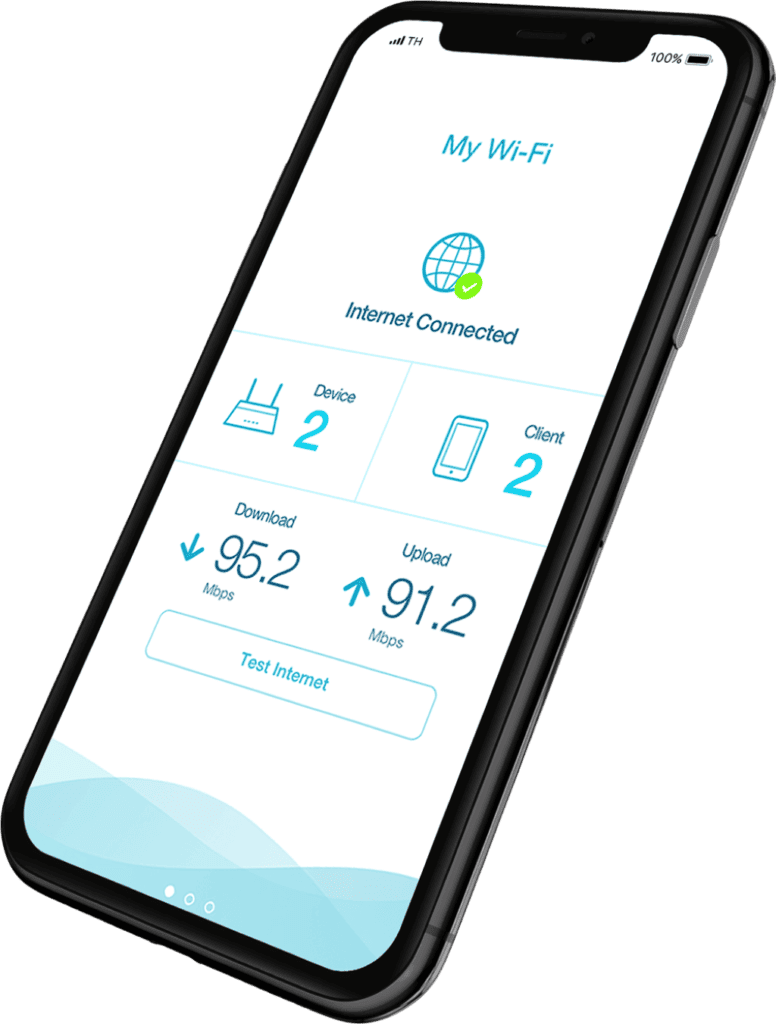
Placing the DAP1820 extenders around my house proved to be equally straightforward. After plugging them into a spare mains wall-socket, I waited for them to finish starting up and pressed their WPS (wireless pairing service) button. Walking back out to the router, I pressed its WPS button and voila! Each extender was connected. Total router set up time 15 minutes. All told the setup process was surprisingly bomb-proof. That said, I am not a fan of setup cards and QR codes. They usually end up lost, which creates headaches in the future when the router has been factory reset and needs to be configured again.
The Android/IOS D-Link Wireless app proved to be very handy indeed, however. It allows me to check up on my network from anywhere and to perform tasks like set up guest network logins and so on. Equally useful is the D-Link wireless skill for Alexa. Having installed it, I can ask the various Alexa’s scattered around my house to enable/disable features, reboot, etc.
Based on my experiences with the DIR-X5460 to date, I’m impressed. Wi-Fi is now a lot more reliable throughout my house. The weird network conflicts I’d experienced with previous mesh extenders are a thing of the past. As I get my hands on more Wi-Fi 6 compatible widgets, the usefulness of the DIR-X5460 looks set to grow. Add to this a simple setup process, and there’s a lot to like. This is why the DIR-X5460 gets a well-deserved 10 out of 10.
https://www.dlink.co.nz/home-solutions/connectivity/routers









